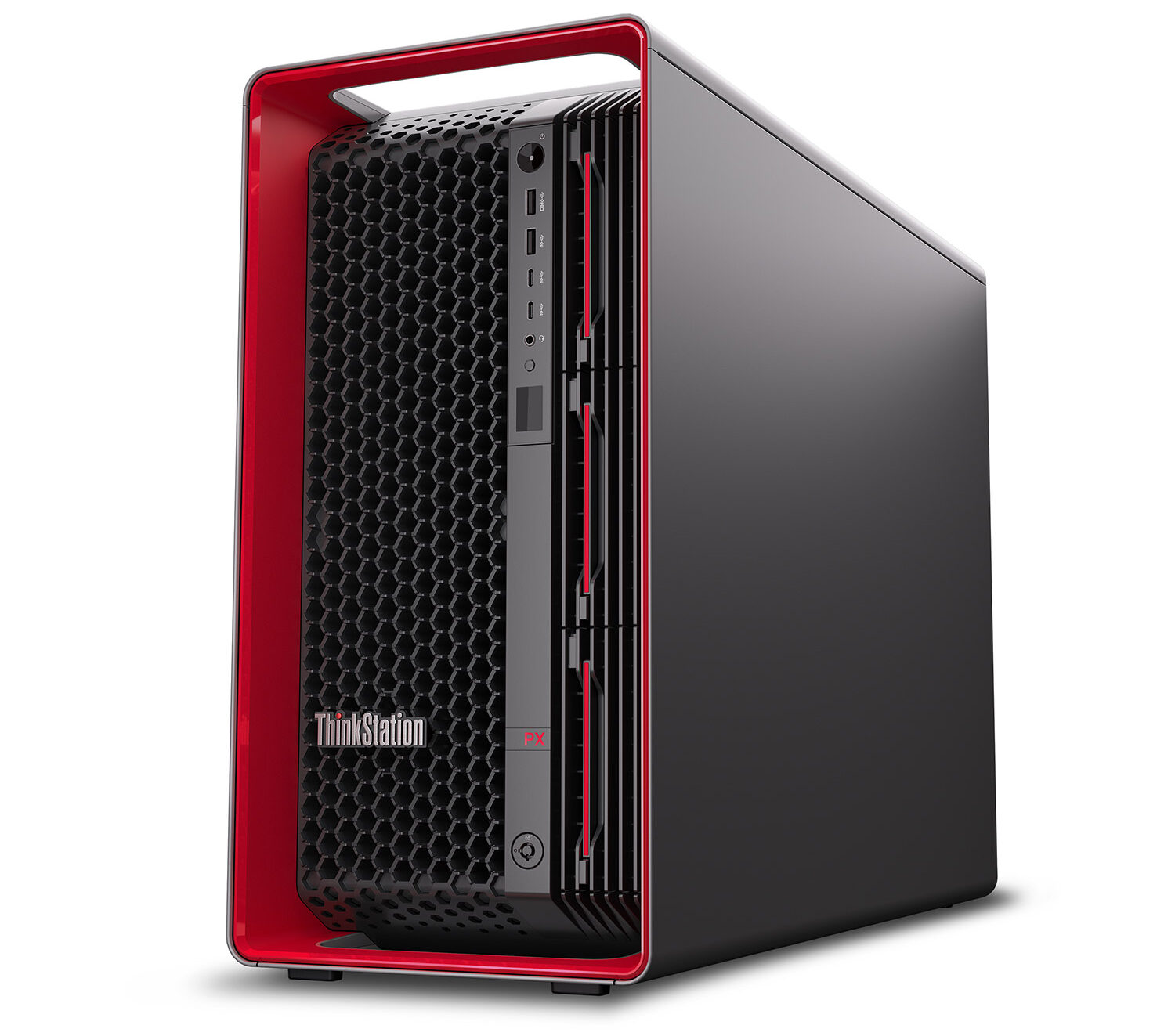‘Sapphire Rapids’ Intel Xeon workstations blur boundaries between desktop and data centre
Lenovo has introduced the ThinkStation P5, P7 and PX (pronounced P10), a trio of desktop workstations powered by Intel’s long-awaited ‘Sapphire Rapids’ CPUs and Nvidia RTX GPUs, including the Nvidia RTX 6000 Ada generation.
The flagship ThinkStation PX is the most expandable of the new machines, featuring dual 4th Gen Intel Xeon Scalable processors (up to 2 x 60-cores) up to four dual-slot GPUs, including the Nvidia RTX 6000 Ada. It is designed to handle the most demanding multi-threaded or multi-GPU workflows such as Computational Fluid Dynamics (CFD), ray trace rendering and video editing.
The ThinkStation P7 comes with a choice of workstation-specific Intel Xeon W-3400 Series processors (up to 56-cores). The single socket machine will likely hit the price/performance sweet spot for many visualisation and simulation workflows, especially those that can’t take advantage of more than 56 cores. It can also support up to three dual-slot GPUs.
The ThinkStation P5 features Intel Xeon W-2400 Series CPUs (up to 24 cores) and up to two dual-slot GPUs. Lenovo calls the P5 an ‘industry workhorse’ and it looks well suited to a wide range of workflows from CAD and visualisation to simulation and reality modelling.
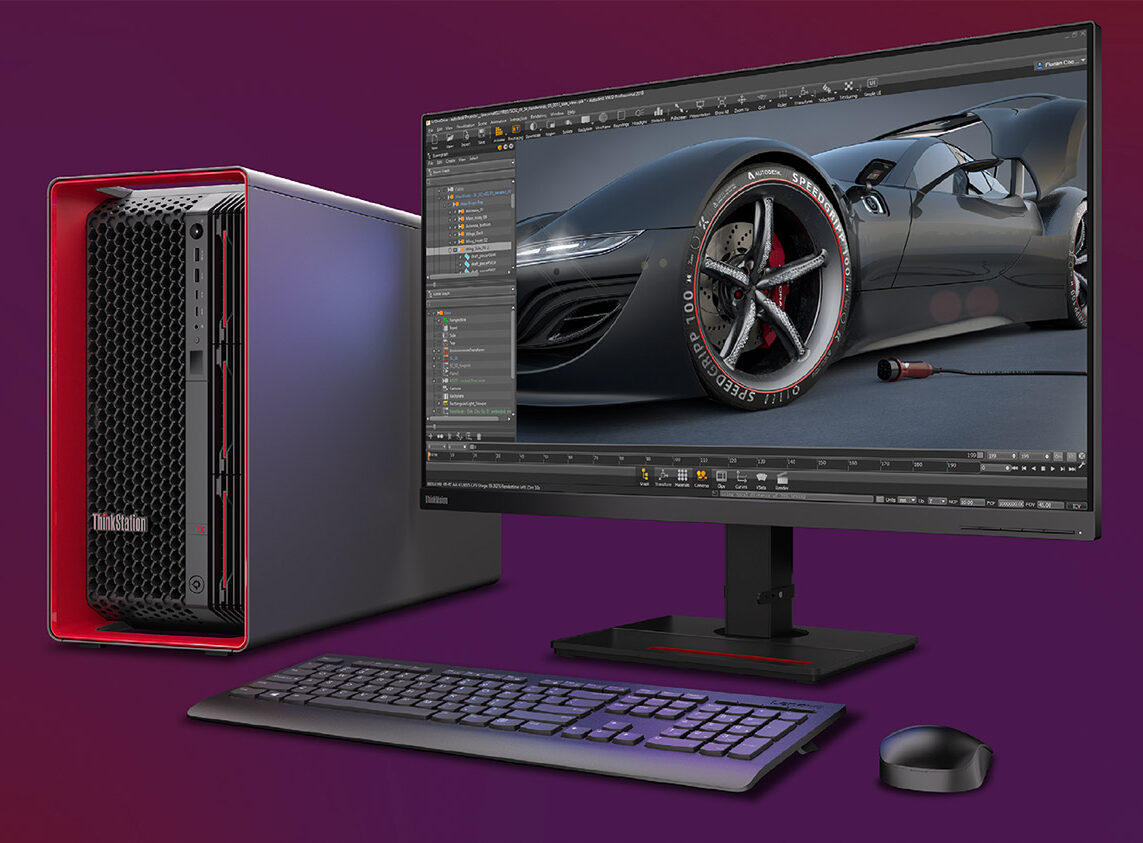
Aston Martin inspired design
All three workstations feature a new tool-less chassis, designed with the help of automaker Aston Martin, who will use the workstations to design and develop its own high-performance vehicles. The chassis features an advanced thermal design, and highlights Lenovo’s trademark red throughout, as Cathal Loughnane, director of partnerships at Aston Martin explains in reference to the ThinkStation PX, “The red is not only the icon or the signature of the Lenovo brand, but it’s also the guide to the machine.
“For instance, if you need to know how to swap the drives, look for the red. If you need to power on the machine, look for the red. Need to change the fan inside the tower? Look for the red. The ultimate in ergonomics is there is no user manual, and you don’t need one with this new design.”
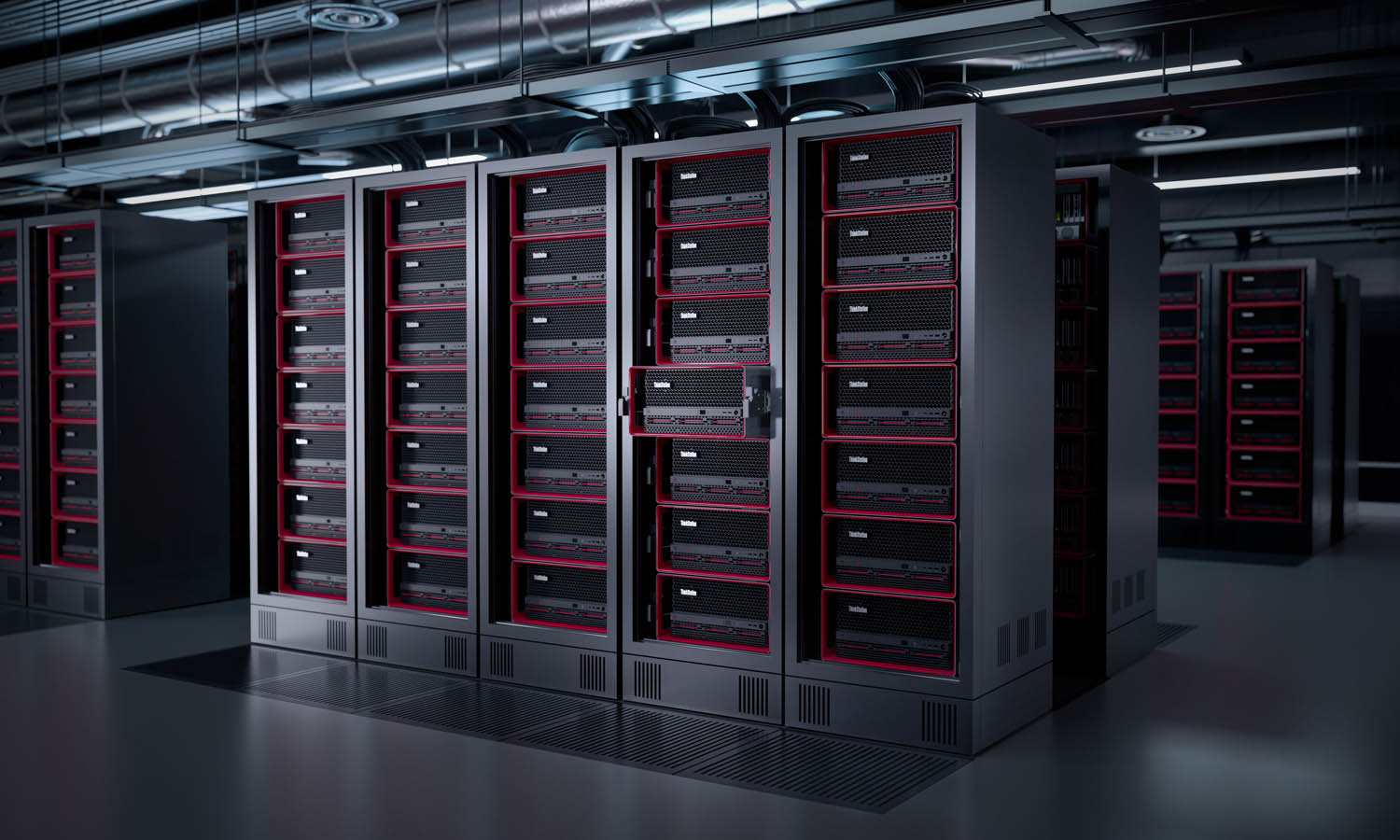
Rack optimised
The ThinkStation PX and P7 were built from the ground up to be ‘rack optimised’ and offer several features to transform these desktop machines into what Lenovo describes as a ‘hybrid cloud workstation’, with remote management capabilities similar to those found in rack servers.
This includes an optional Baseboard Management Controller (BMC) card that will give IT managers ‘full remote management’. It will enable them to monitor the workstation, cycle on and off, perform BIOS or firmware updates and re-image the machine if necessary. In addition to data centre deployments, this could be of interest to IT managers supporting those working from home.
The machines also feature enhanced on-board diagnostics with a small LCD display on the front that shows a QR code in the event of a system error – even out of band failure states when a machine won’t turn on. The user simply snaps the code with their smart phone, and they will be taken directly to the relevant page on the Lenovo service website.
Lenovo ThinkStation PX
The ThinkStation PX is Lenovo’s flagship ‘Sapphire Rapid’ desktop workstation and can also be deployed in data centre environments, either as a one-to-one remote workstation or a multi-user, GPU-accelerated virtual resource.
The ThinkStation PX is powered by one or two server class 4th Gen Intel Xeon Scalable processors and up to 2 TB of DDR5 memory. With up to 120 CPU cores (60 cores per CPU), the ThinkStation PX should be of particular interest to users of highly multi-threaded software such as ray trace rendering, and certain simulation tools such as Computational Fluid Dynamics (CFD).
The machine can also handle very demanding GPU workflows with support for up to four dual-slot Nvidia RTX 6000 Ada Generation GPUs (this goes down to two GPUs, when configured with a single CPU). Alternatively, it can take up to eight single slot GPUs, which could make it an interesting option as a multi-user virtual workstation, where each user gets a dedicated GPU.
With 4th Gen Intel Xeon Scalable processors having a TDP of up to 350W and Nvidia RTX 6000 Ada Generation GPUs having a total board power of 300W, Lenovo has done a lot of work on thermal management.
The ThinkStation PX offers ‘unobstructed airflow’ from front to back, across CPUs, GPUs and memory. This has been made possible by shifting the Power Supply Unit(s) and Hard disk Drives (HDDs) to one side of the chassis. Cool air is drawn in through the ‘3D Hexperf’ front grill by six hot swappable and removable cooling fans. The grill’s design was inspired by Aston Martin’s iconic DBS grand tourer and engineered for maximum airflow.
The machine also features a redesigned air baffle that acts as a wall of separation between the three distinct zones of the tri-channel cooling system. Each zone is fed by its own fans – the idea being that you don’t have any pre-heated air from the CPUs going into the GPUs and vice versa. The baffle also separates the CPUs and brings a different channel of fresh air to each as well as the memory DIMMs.
The ThinkStation PX earns its datacentre credentials from the rack optimised ‘5U’ design. There are built in handles on all four corners, and standard bolt holes hidden under a removable top cover, making it easy to deploy in a standard 19-inch rack with the optional sliding rack rail kit.
For resiliency and redundancy, the machine comes with two rear hot-swappable 1,850W power supply units (PSUs), so should one PSU fail, the machine will carry on working. Other features include a rear accessible power button and lockable front access hot swap storage, which includes options for both 3.5-inch Hard Disk Drives (HDDs) and Solid State Drives (SSDs).
Lenovo ThinkStation P7
The ThinkStation P7 is rack-optimised for use in a variety of desktop and data centre environments and comes in a 4U enclosure. The machine is built around the new workstation-specific Intel Xeon W-3400 Series processors, supporting up to 56 cores in a single socket, and offers up to 1 TB of memory.
While the ThinkStation P7 can’t match the ThinkStation PX for number of cores, it boasts higher clock speeds, so should outperform the ThinkStation PX in many system operations and in workflows that can’t take advantage of more than 56 cores.
The machine supports up to three dual-slot Nvidia RTX 6000 Ada Generation GPUs. While this is one less than the ThinkStation PX it does this with a single CPU, so it could end up being a more cost effective option for those with multi-GPU workflows.
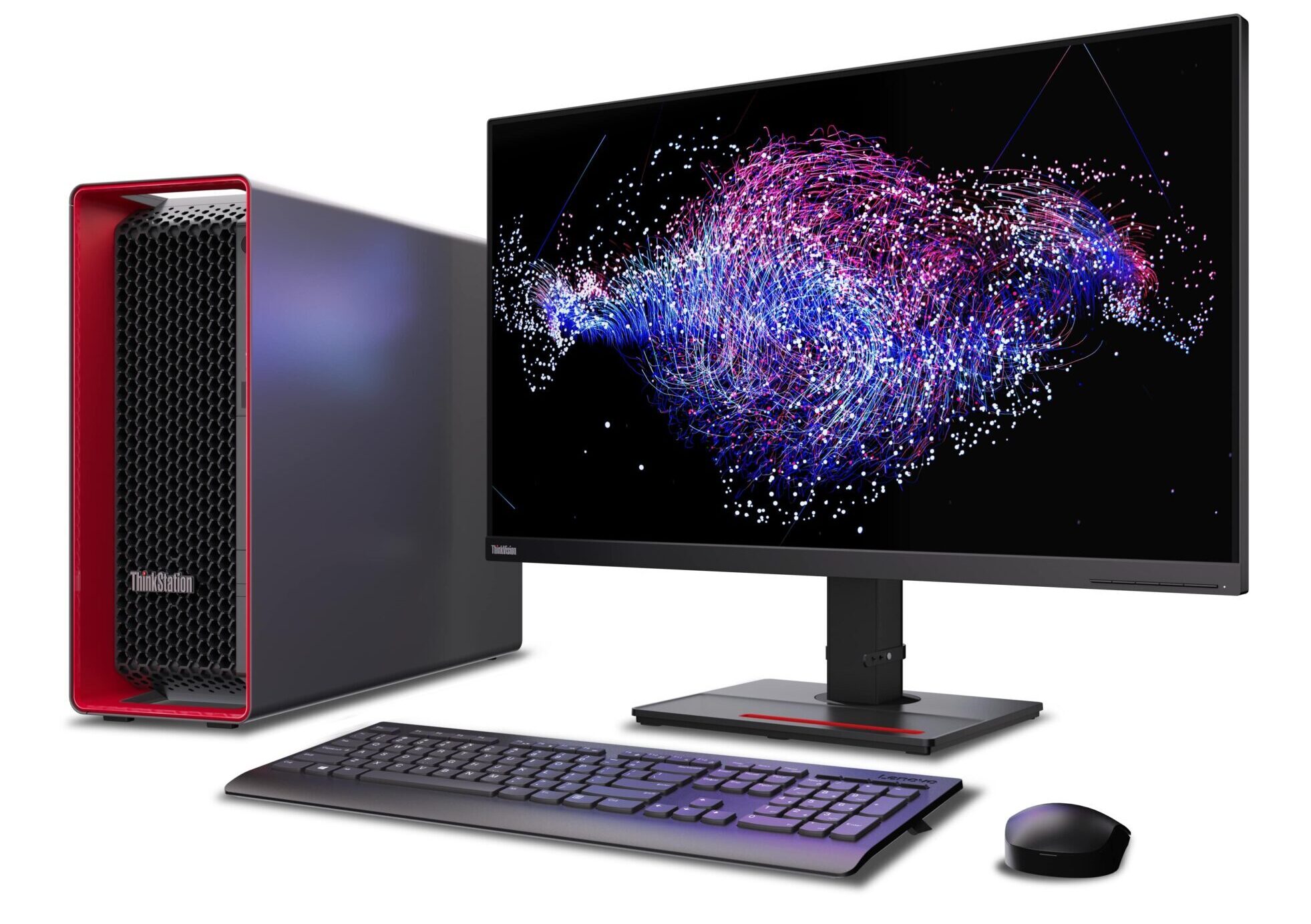
Lenovo ThinkStation P5
The ThinkStation P5 is primarily a desktop workstation. It can be rack mounted but is not purpose built for racks like the P7 and PX. It comes with a choice of workstation-specific Intel Xeon W-2400 Series processors with up to 24-cores.
In addition to having fewer cores than its siblings, the Intel Xeon W-2400 Series also has fewer memory channels, which can affect performance in some memory-intensive workflows such as simulation.
However, with four memory channels and up to 512 GB of memory it’s still a big step up from entry-level ‘Intel Core’ workstations with dual channel and 128 GB. The ThinkStation P5 can be configured with up to two dual-slot GPUs.
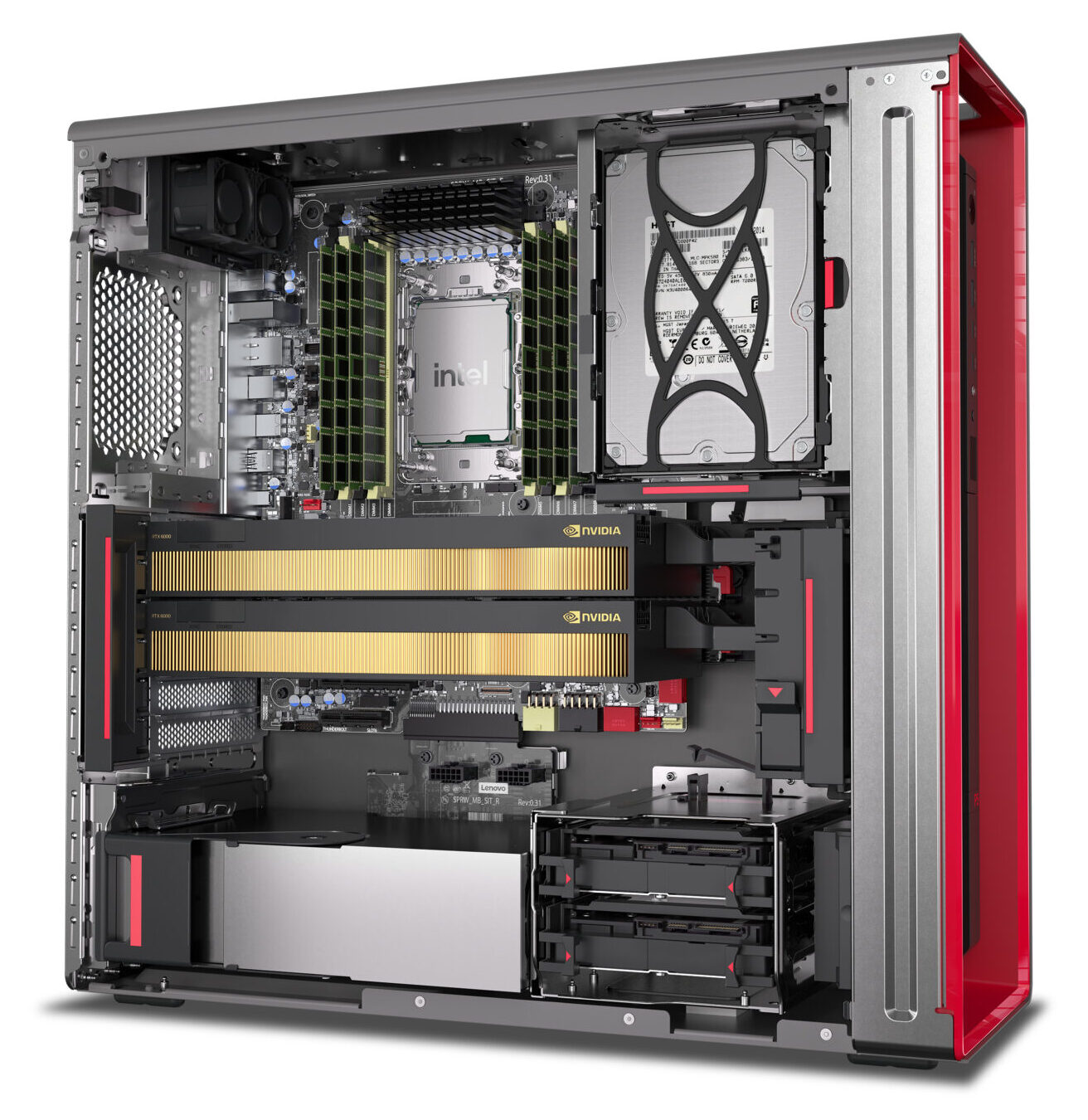
The three new workstations will be available starting in May 2023.
All towers have optional WiFi with antennas built into the top of the chassis.


